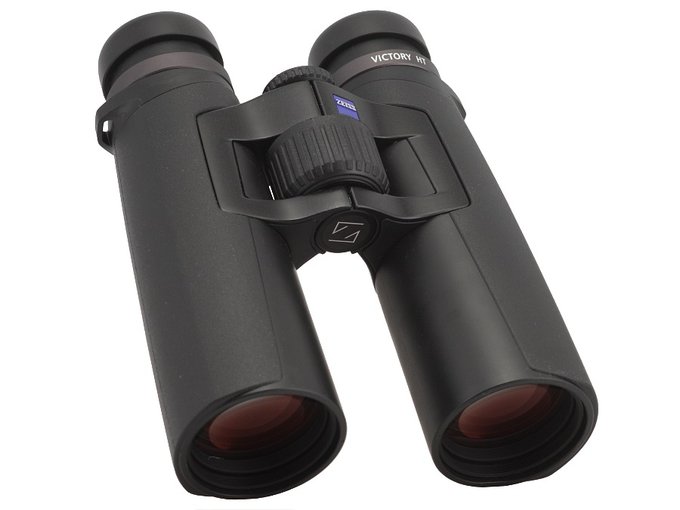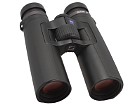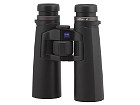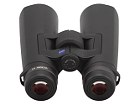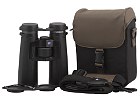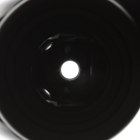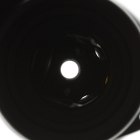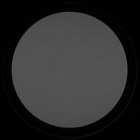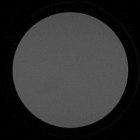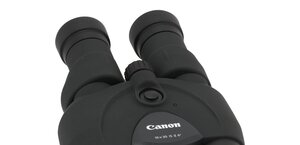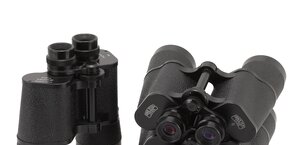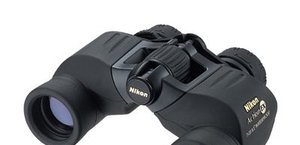Carl Zeiss Victory HT 10x42
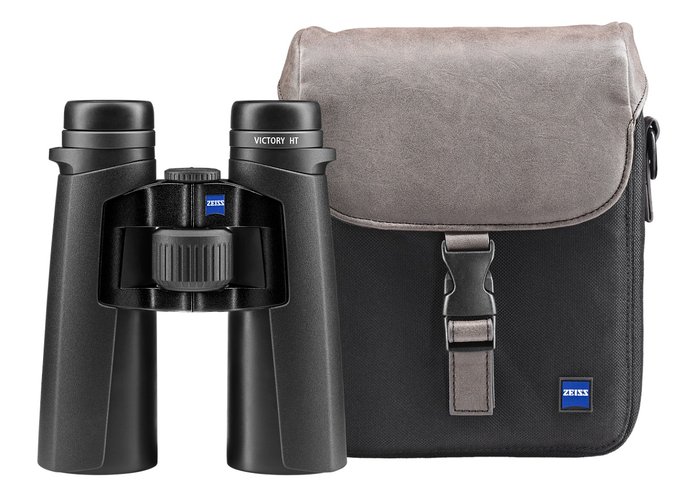 |
At that time everybody thought these two were fully-fledged successors of the Victory FL series although at first glance there were few differences between them and the older models, especially when it came to the parameters. Their field of view, eye relief and Abbe-Koenig prism systems remained the same but the minimum focusing distance slightly improved. The properties of their casings also seemed to be rather similar: the same immersion resistance (400 mbar), the same temperature ranges (from -30 to +63 degrees Celsius); the physical weight and dimensions changed but only slightly. Still the new Victory HT instruments looked very modern, featuring a big focusing wheel in a very comfortable position.
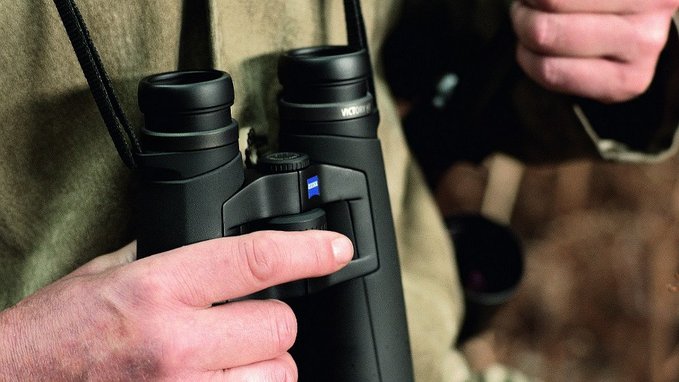 |
When it comes to the optical construction of the Victory HT you get a 4-element objective lens with low-dispersion fluorite FL glass. It features a 1+2+1 layout and the last element is used for focusing. The other part consists of Abbe-Koenig prisms we’ve already mentioned above, and behind the prisms you see a 5-element eyepiece (2+2+1).
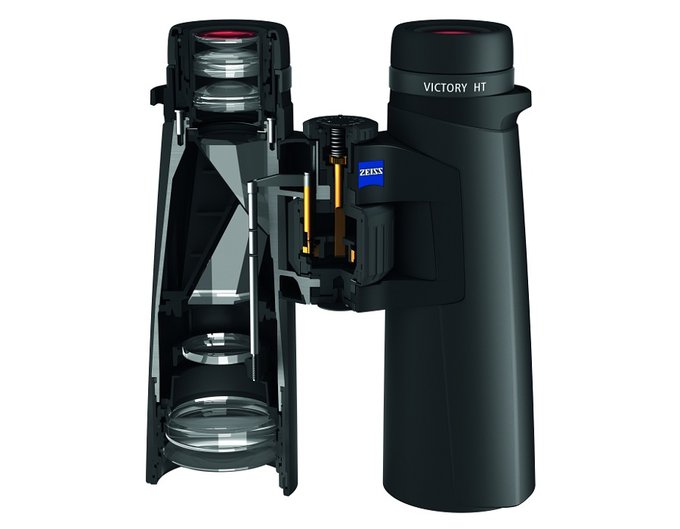 |
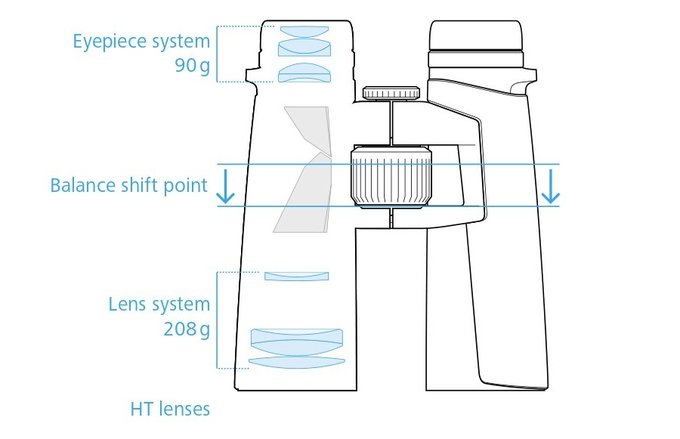 |
All of this reminds us of the Victory FL optics as its layout of elements was exactly the same. Still now Zeiss boasts of new high transmission glass (Schott HT) which, combined with Abbe-Koenig roof prisms using total internal reflection, should guarantee a sensational 95% of the whole instrument’s transmission.
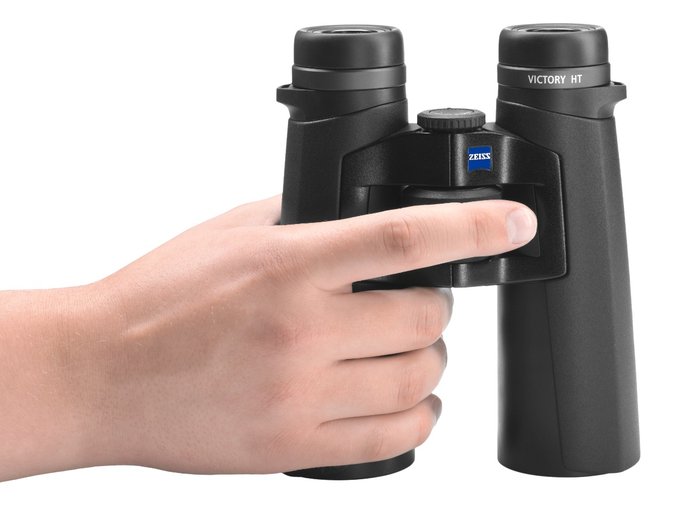 |
Buyers get joined caps for eyepieces and objectives, a wide strap to put round your neck, a stylish case with another strap and a cleaning cloth. The binoculars come with a 10-year guarantee period.
| Magnification | Lens diameter | Angular field of view | Prisms | Eye relief | Weight | Price |
|---|---|---|---|---|---|---|
| 10 | 42 | 110/1000(6.3o) | BaK-4/roof | 16 mm | 795 g | 8999 PLN |
Summary
Pros:
- very solid, stylish and comfortable housing,
- high transmission,
- low chromatic aberration,
- slight astigmatism,
- moderate coma,
- imperceptible brightness loss,
- sharp, clear image for most of the field of vision,
- good quality Abbe-Koenig prisms,
- high quality antireflection coatings,
- very good whiteness rendering,
- nicely blackened, very clean tubes,
- perfectly circular exit pupils.
Wady:
- false exit pupils.
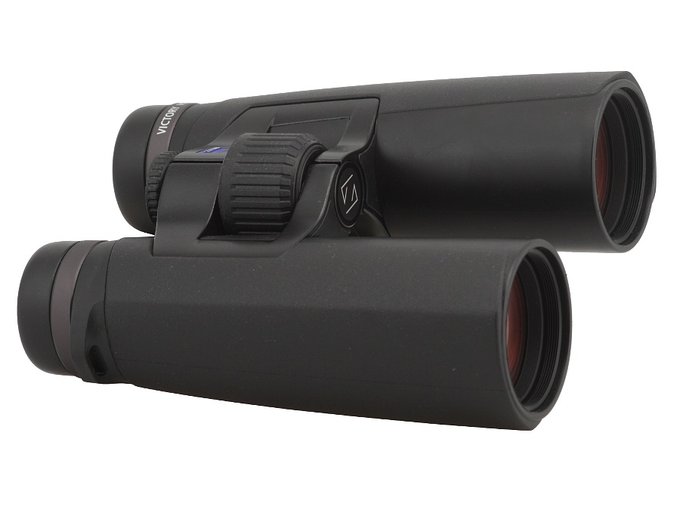 |
When the Victory HT series was launched I was really glad because I thought it would be a fully-fledged successor of the Victory FL models. After getting acquainted with the specifications of new pairs of binoculars I found out that the decrease of the minimum focusing distance was the main change. Of course the producer also boasted of the new type of glass with a higher transmission level and a new casing but the optical system of the new devices seemed to remain very similar to the optical system of the old binoculars. It seems the Victory SF models should be treated as real successors; the Victory HT models are just slightly improved Victory FL binoculars, only encased in a new, more stylish and more ergonomic housing.
As the Schott HT glass seems to be the main change let’s check the transmission of the tested pair of binoculars.
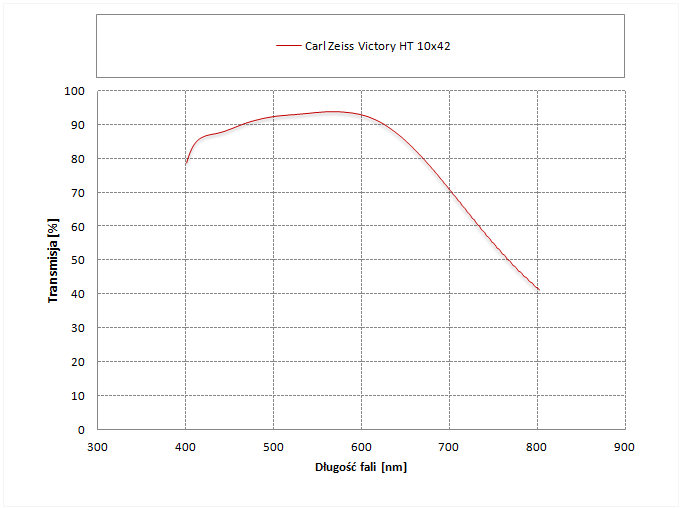
The graph looks nice indeed – the maximum transmission is able to get to 94% and, what’s important, that result is reached in the middle of the visible spectrum. The red and blue light transmission levels are good as well – the Victory HT should render colors properly. Unfortunately we can’t compare this graph to the one of the Victory FL 10x42 as that set of binoculars was tested by us without measuring the transmission across the whole visible spectrum. Still we can use here the transmission graph of the Victory FL 8x42 model which contains the same number of optical elements. It’s clear that in the middle of the visible spectrum both pairs of binoculars have results on almost the same level but the new Victory HT fares better for blue light so the overall amount of light delivered to your eye is higher.
We praised the Victory FL models so it would be difficult not to praise a tad improved Victory HT as well. The changes in optics are slight but the new casing in my opinion looks better – it seems to be even more solid, it’s more comfortable to hold and to look through. It’s a pity, though, that the price of the Victory HT is noticeably higher than the price of the Victory FL models. If you want to save a significant sum of money I suppose it’s better to hunt for second-hand Victory FL devices after all.





